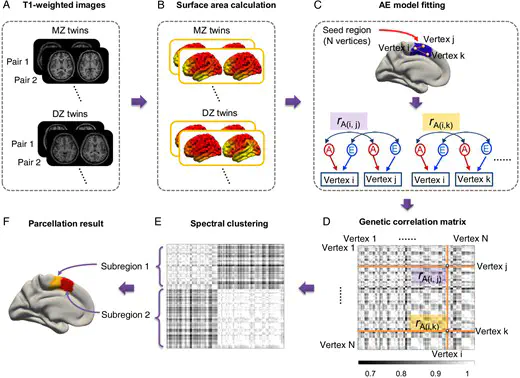 pipeline
pipelineAbstract
Various brain structural and functional features such as cytoarchitecture, topographic mapping, gyral/sulcal anatomy, and anatomical and functional connectivity have been used in human brain parcellation. However, the fine-grained intrinsic genetic architecture of the cortex remains unknown. In the present study, we parcellated specific regions of the cortex into subregions based on genetic correlations (i.e., shared genetic influences) between the surface area of each pair of cortical locations within the seed region. The genetic correlations were estimated by comparing the correlations of the surface area between monozygotic and dizygotic twins using bivariate twin models. Our genetic subdivisions of diverse brain regions were reproducible across 2 independent datasets and corresponded closely to fine-grained functional specializations. Furthermore, subregional genetic correlation profiles were generally consistent with functional connectivity patterns. Our findings indicate that the magnitude of the genetic covariance in brain anatomy could be used to delineate the boundaries of functional subregions of the brain and may be of value in the next generation human brain atlas.